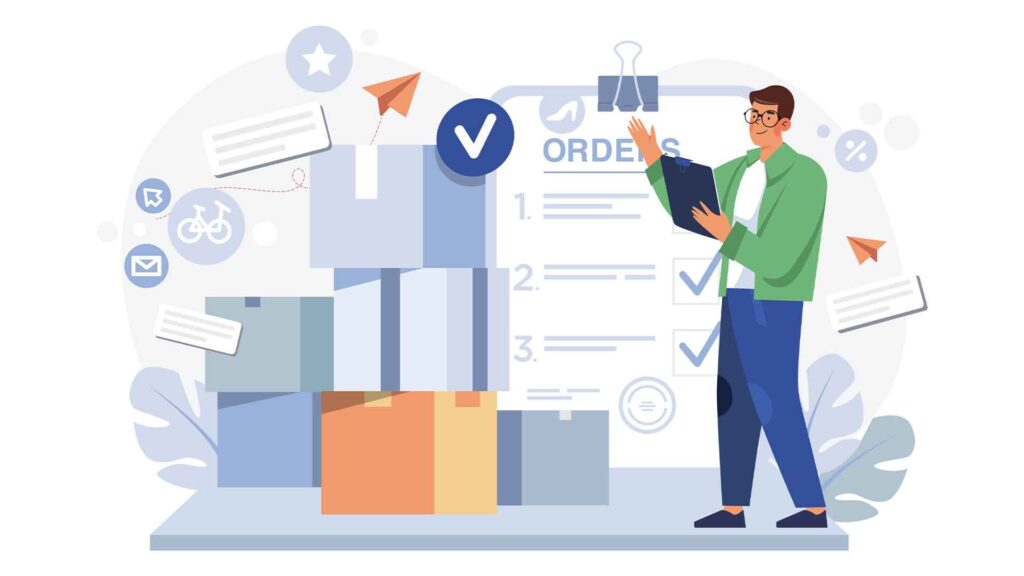In the dynamic world of logistics, the quest for efficiency and speed is unending. One strategy that stands out as a beacon of streamlined operations is cross-docking. In this blog, we’ll unravel the concept of cross-docking inventory management, explore its benefits, and dive into how businesses can harness its power to optimize their supply chains.
Cross-Docking Inventory Management: A Logistics Game-Changer
What is Cross-Docking in logistics? Cross-docking is a logistics strategy that involves unloading goods from an inbound vehicle and directly loading them onto outbound vehicles with minimal or no storage time. Unlike traditional warehousing, which involves storing goods for a period, cross-docking expedites the flow of products through the supply chain, reducing handling costs and delivery times.
Key Components of Cross-Docking Inventory Management:

Cross-docking, a logistics strategy that involves unloading goods from inbound transportation and loading them directly onto outbound transportation with minimal storage in between, has become a cornerstone in supply chain management. This streamlined approach offers a multitude of benefits, from reducing handling costs to improving overall efficiency. Let’s explore the key components that make cross-docking a game-changer in modern logistics.
1. Centralized Facility:
– Definition: A centralized cross-docking facility serves as the nerve center where goods are received, sorted, and quickly dispatched.
– Significance: Centralization enables better coordination and control over the entire cross-docking process, optimizing efficiency and reducing transit times.
2. Receiving Dock:
– Function: The receiving dock is where inbound shipments arrive. Here, products are unloaded, and their contents are verified against the accompanying documentation.
– Efficiency Boost: The strategic layout of the receiving dock minimizes delays, ensuring a swift transition from inbound to outbound.
3. Sorting and Staging Area:
– Process: Products are sorted based on predetermined criteria, such as destination or final retail store, in the staging area.
– Advantage: Sorting streamlines the process, allowing for a seamless transition between receiving and loading, reducing the risk of errors.
4. Material Handling Equipment:
– Types: Forklifts, conveyor systems, and pallet jacks are essential for moving goods efficiently within the cross-docking facility.
– Role: Proper equipment ensures the smooth flow of products, minimizing handling time and enhancing overall productivity.
5. Storage (if needed):
– Purpose: While cross-docking inventory management emphasizes minimal storage, some goods may require temporary holding.
– Optimization: Efficient storage management ensures that products spend minimal time in storage, aligning with the core principles of cross-docking inventory management.
6. Outbound Dock:
– Function: The outbound dock is where sorted and staged products are loaded onto outbound transportation, be it trucks, trailers, or other carriers.
– Efficiency Impact: A well-designed outbound dock minimizes loading times, contributing to faster turnaround times for outbound shipments.
7. Real-Time Inventory Management:
– Integration: Employing technology for real-time tracking and inventory management is crucial.
– Benefits: Accurate, up-to-date information allows for better decision-making, reduces the risk of errors, and enhances overall visibility into the supply chain.
8. Strategic Partner Collaboration:
– Definition: Collaborating with suppliers, carriers, and other partners in the supply chain is integral.
– Advantage: Strong partnerships facilitate seamless coordination, enabling a smoother cross-docking process and optimizing the entire supply chain.
9. Optimized Transportation Network:
– Integration: Ensuring that the transportation network aligns with cross-docking requirements is vital.
– Efficiency Impact: A well-optimized transportation network enhances the overall efficiency of cross-docking operations, reducing transit times and costs.
10. Advanced Planning and Scheduling:
– Process: Thorough planning and scheduling are crucial for the success of cross-docking inventory management operations.
– Benefits: Advanced planning minimizes bottlenecks, enhances resource utilization, and ensures that the cross-docking process operates at peak efficiency.
Benefits of Cross-Docking Inventory Management:

1. Reduced Holding Costs:
Cross-docking minimizes the need for long-term storage, significantly reducing holding costs associated with warehousing.
2. Faster Order Fulfillment:
By bypassing traditional warehousing processes, cross-docking inventory management accelerates the order fulfillment cycle, ensuring that products reach customers faster.
3. Lower Inventory Levels:
With a faster turnover of goods, businesses can maintain lower inventory levels while meeting customer demand efficiently.
4. Improved Supply Chain Visibility:
The swift movement of products in a cross-docking inventory management system enhances supply chain visibility. Real-time tracking and monitoring have become more manageable.
5. Enhanced Responsiveness:
Cross-docking allows businesses to respond quickly to changes in demand, market trends, or unexpected events, contributing to greater flexibility.
Strategies for Successful Cross-Docking Implementation:

1. Data-Driven Planning:
Analyze historical data and demand patterns to identify which products are suitable for cross-docking inventory management.
2. Collaborative Relationships:
Forge strong partnerships with suppliers and carriers to ensure smooth coordination and timely deliveries.
3. Technology Integration:
Implement advanced technologies, such as RFID and WMS systems, to enhance real-time tracking and monitoring.
4. Flexible Facility Design:
Design cross-docking facilities with flexibility in mind, allowing for easy adaptation to changing business needs.
Real-Life Examples of Cross-Docking Success:

1. Retail Giants: Major retailers use cross-docking inventory management to swiftly move products from suppliers to stores, reducing the need for extensive warehousing.
2. Perishable Goods: Industries dealing with perishable goods, like the food and pharmaceutical sectors, leverage cross-docking for quick and efficient distribution.
3. E-commerce Expedience: E-commerce platforms employ cross-docking to accelerate the delivery of products directly from manufacturers to end consumers.
Conclusion: Elevating Logistics with Cross-Docking Excellence
In the relentless pursuit of efficiency in logistics, cross-docking emerges as a strategic ally. By minimizing storage time, reducing handling costs, and accelerating order fulfillment, businesses can transform their supply chains into agile, responsive, and cost-effective operations. Embracing cross-docking inventory management is not just a logistical choice; it’s a powerful step toward shaping the future of efficient supply chain management.
In the intricate dance of supply chain management, cross-docking inventory management emerges as a choreographer, orchestrating the seamless movement of goods. Galaxy Freight, with its commitment to innovation and efficiency, stands as a beacon in the realm of cross-docking, ensuring that your inventory management strategy is not just efficient but transformative. Contact us today to experience the Galaxy Freight difference and elevate your supply chain to new heights.
At Galaxy Freight, we understand the transformative power of cross-docking in optimizing inventory management. Our state-of-the-art facilities and strategic processes ensure that your goods move seamlessly through the supply chain, minimizing delays and maximizing efficiency.



